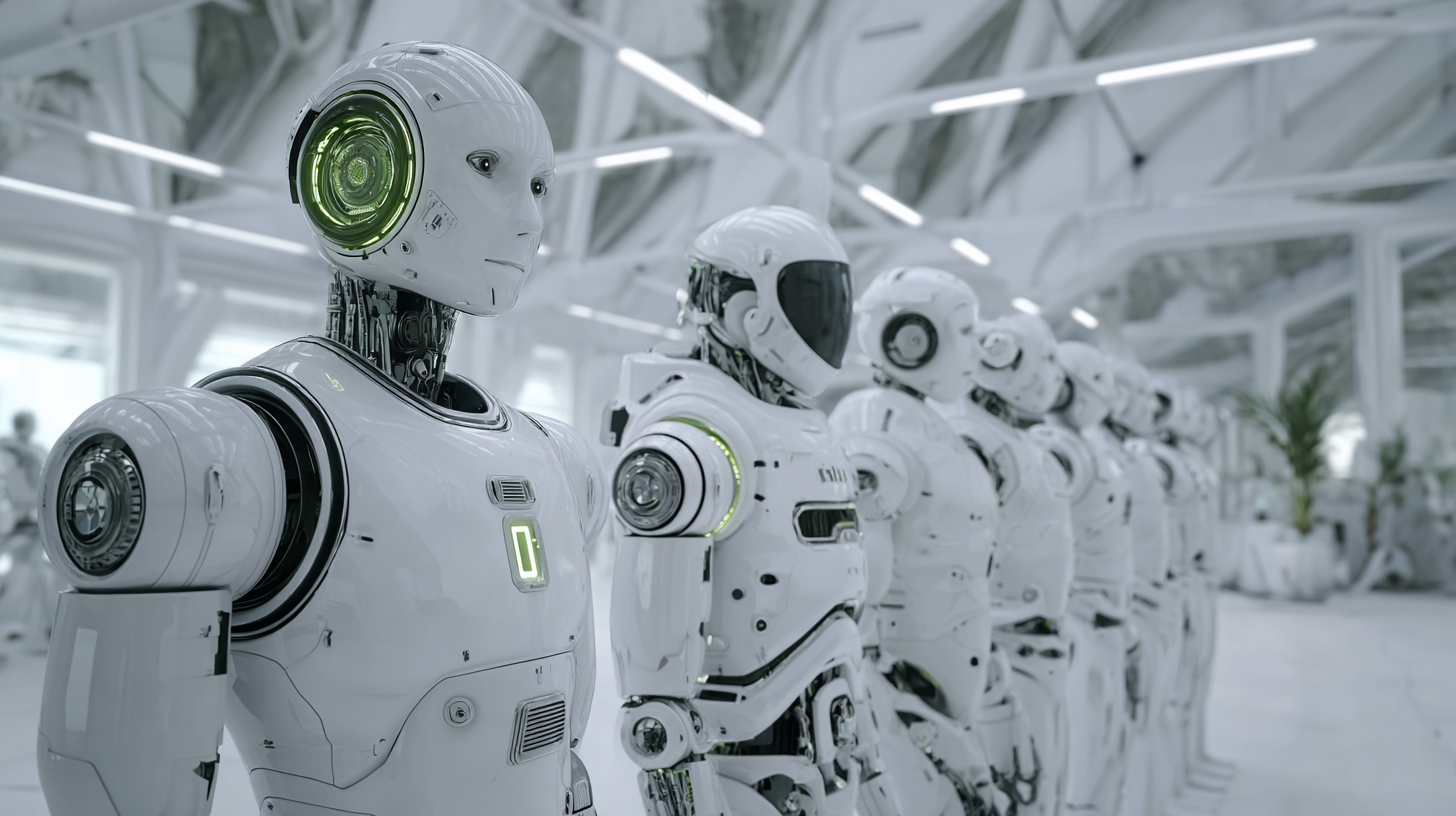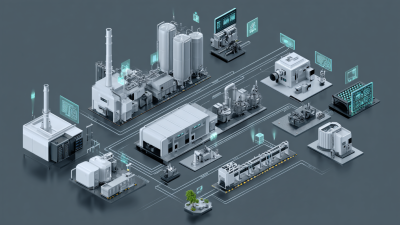Exploring the Future: How Robotics and Automation Transform Everyday Life
As we stand on the brink of a technological revolution, the influence of robotics and automation on our daily lives is becoming increasingly profound. According to a recent report by the International Federation of Robotics, the global market for robotic and automation technologies is projected to reach $210 billion by 2025, underscoring their vital role in industries ranging from manufacturing to healthcare. The World Economic Forum also highlights that automation could displace up to 85 million jobs by 2025, while simultaneously creating 97 million new roles that could redefine the workforce landscape. This dual impact of robotics and automation not only promises increased efficiency and productivity but also challenges us to rethink our approach to work and everyday tasks.

As we explore the future of these transformative technologies, it is crucial to understand how they are reshaping our interactions, economies, and societal structures.
The Rise of Smart Home Technologies: Revolutionizing Daily Living
The rise of smart home technologies is reshaping our daily living in profound ways. With advancements in robotics and automation, households are becoming increasingly equipped with devices that enhance convenience, security, and efficiency.
 Smart thermostats can learn our schedules, adjusting temperatures automatically to ensure comfort while saving energy. Similarly, intelligent lighting systems allow us to control the ambiance of our homes with simple voice commands or smartphone apps, creating a personalized living space that adapts to our needs.
Smart thermostats can learn our schedules, adjusting temperatures automatically to ensure comfort while saving energy. Similarly, intelligent lighting systems allow us to control the ambiance of our homes with simple voice commands or smartphone apps, creating a personalized living space that adapts to our needs.
Moreover, the integration of smart appliances is streamlining everyday tasks. Robotic vacuum cleaners autonomously navigate through our homes, saving us time on chores. Smart refrigerators can track inventory, suggest recipes based on available ingredients, and even alert us when we’re running low on essentials.
These innovations not only simplify our routines but also contribute to a more connected lifestyle, where devices communicate seamlessly with each other and with us, providing a level of automation that was once only imagined in science fiction. As these technologies continue to evolve, they will undoubtedly further transform the fabric of everyday life, making our homes more intuitive and responsive to our lifestyles.
Robots in the Workplace: Enhancing Productivity and Safety
Robots are increasingly becoming integral to the workplace, significantly enhancing productivity and safety across various industries. Automation technologies are being adopted in manufacturing, logistics, and even healthcare, where robots are utilized for repetitive tasks, allowing human workers to focus on more complex responsibilities. This shift not only improves efficiency but also reduces the likelihood of human error, leading to higher-quality output. For instance, in assembly lines, robots can perform tasks such as welding and packaging at a speed and precision that surpasses human capabilities.
Additionally, the implementation of robots in the workplace contributes to a safer working environment. By taking over hazardous tasks, such as handling toxic substances or working in extreme conditions, robots minimize the risk of accidents and injuries among employees. This is particularly beneficial in industries like construction and mining, where safety is paramount. As robots continue to evolve with advancements in AI and machine learning, their ability to collaborate with human workers and adapt to new challenges will further redefine workplace dynamics, ultimately transforming how we approach work and safety in our everyday lives.
Impact of Robotics and Automation on Workplace Productivity and Safety
This chart illustrates the improvement in workplace productivity and safety through the implementation of robotics and automation technologies over the past decade. The data reflects the percentage increase in productivity and decrease in workplace accidents.
Automated Transportation: Shaping the Future of Commute
Automated transportation is set to redefine our daily commutes, paving the way for more efficient and safer travel. In urban areas like Phoenix, the advent of self-driving cars illustrates how technology is gradually reshaping our transportation landscape. These vehicles, equipped with advanced sensors, are navigating through city streets, signifying the beginning of a new era in commuting. As they become more integrated into everyday life, they promise to reduce traffic congestion, decrease emissions, and enhance overall mobility.
In addition to ground-based innovations, the development of aerial taxis is on the horizon, with regulatory frameworks being established to facilitate their operation. With the Federal Aviation Administration announcing new rules for pilot training and certification, air taxis could soon become a viable option for commuters, further alleviating the pressures on urban transport systems. As cities like Shanghai aim for a future where green transportation comprises at least 75% of commuting options, it is evident that automated solutions will play a crucial role in achieving these ambitious sustainability goals, ultimately transforming the urban commute into a more efficient and environmentally friendly experience.
Personal Assistants: How AI Transform Daily Tasks
As artificial intelligence (AI) technology advances, personal assistants are becoming integral to our daily lives, transforming mundane tasks into seamless experiences. According to a report by Statista, the global market for AI-powered personal assistants is expected to reach $19.5 billion by 2026, growing at a compound annual growth rate (CAGR) of 34.9% from 2021. This rapid growth underscores the increasing reliance on AI to enhance productivity and efficiency in everyday tasks.
Personal assistants like Amazon's Alexa, Apple's Siri, and Google Assistant are not just tools for setting reminders or checking the weather anymore; they are evolving into sophisticated systems that help manage schedules, control smart home devices, and even provide personalized recommendations based on user behavior. A survey by PwC indicated that 53% of people said they would be comfortable sharing personal data with AI personal assistants if it meant receiving a more personalized experience. As these AI systems learn and adapt to user preferences, they will continue to streamline our routines and free up time for more meaningful activities, indicating a significant shift in how we engage with technology in our daily lives.
Exploring the Future: How Robotics and Automation Transform Everyday Life
| Feature | Description | Impact on Daily Life |
|---|---|---|
| Voice Assistance | Allows users to perform tasks through voice commands. | Increases efficiency and hands-free multitasking capabilities. |
| Smart Scheduling | AI assists in managing calendars and scheduling appointments. | Reduces missed appointments and time management stress. |
| Home Automation | Controls home devices such as lights and thermostats remotely. | Enhances comfort and energy efficiency in homes. |
| Personalized Recommendations | AI analyzes user habits to suggest products and services. | Saves time on decision making and improves user satisfaction. |
| Health Monitoring | Tracks health metrics and provides insights on wellness. | Empowers users to take proactive steps towards their health. |
The Impact of Robotics on Healthcare: Improving Patient Outcomes
 The integration of robotics in healthcare is revolutionizing patient care and outcomes. According to a report by the International Federation of Robotics, the use of robotic systems in medical applications is projected to grow significantly, with an expected market size of $18 billion by 2025. Surgical robots, such as the da Vinci Surgical System, have demonstrated improved precision in procedures, leading to shorter hospital stays and faster recovery times. These advancements allow surgeons to perform complex operations with minimal invasiveness, thereby reducing the risk of infections and complications.
The integration of robotics in healthcare is revolutionizing patient care and outcomes. According to a report by the International Federation of Robotics, the use of robotic systems in medical applications is projected to grow significantly, with an expected market size of $18 billion by 2025. Surgical robots, such as the da Vinci Surgical System, have demonstrated improved precision in procedures, leading to shorter hospital stays and faster recovery times. These advancements allow surgeons to perform complex operations with minimal invasiveness, thereby reducing the risk of infections and complications.
Additionally, robotic technology is enhancing patient monitoring and rehabilitation. A study from the Journal of Rehabilitation Research and Development highlights that robotic exoskeletons can increase mobility for patients with spinal cord injuries, improving their quality of life. Furthermore, robots coupled with artificial intelligence are being utilized for data analysis and predictive modeling, which aids healthcare professionals in making informed decisions about patient care. By providing real-time health monitoring and personalized treatment plans, robotics is fundamentally changing how healthcare is delivered, ultimately paving the way for better patient outcomes.
Related Posts
-

Robotics Automation: A Comparative Analysis of Leading Solutions for Global Buyers
-

5 Best Innovations in Think Robotics for the Future of Automation
-

How to Leverage Think Robotics for Enhanced Industrial Efficiency
-

The Future of Robotics Automation Transforming Industries with Data Driven Innovations
-

Challenges Faced by Industries Embracing Robotics and Automation
-

Ultimate Guide to Mastering Agile Robotics for Business Success